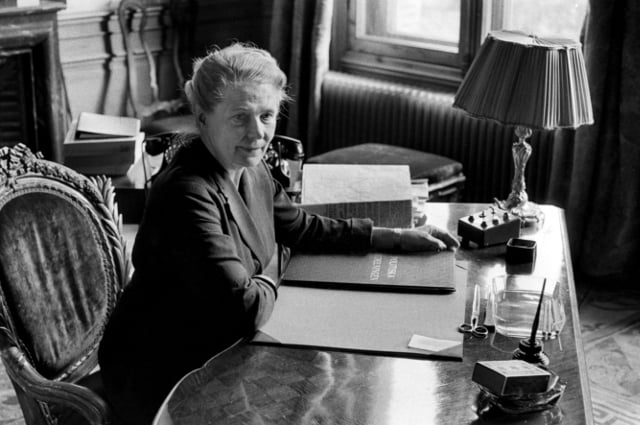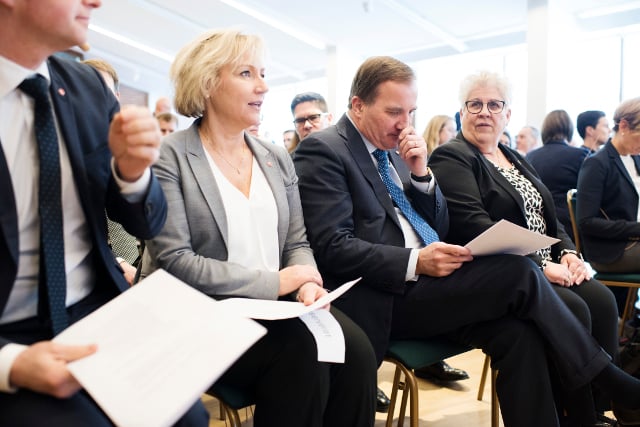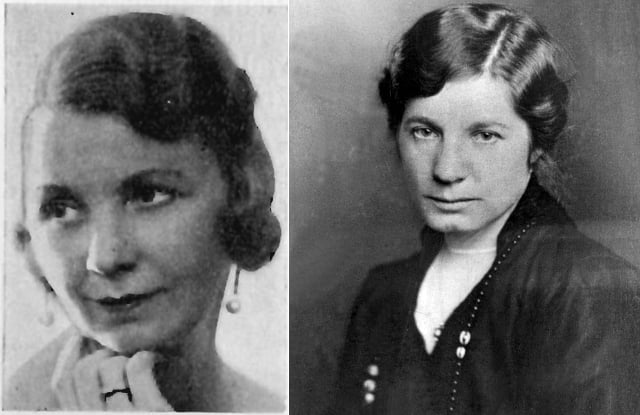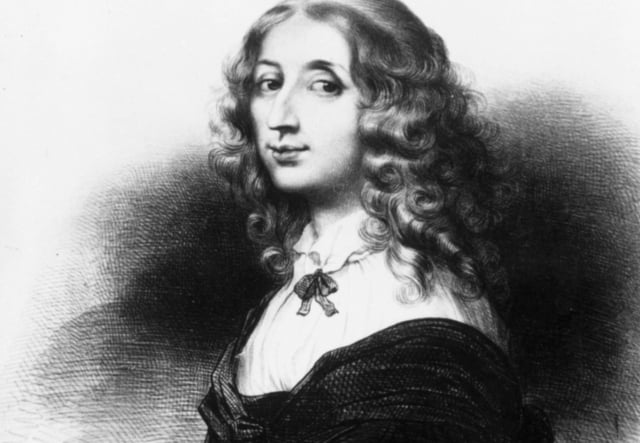With the launch today of the Biographical Dictionary of Swedish Women (SKBL), the University of Gothenburg has raised the profile of 1,000 socially-important women in Sweden's history and addressed a need for greater visibility of women role models. The launch coincides with International Women's Day, and the database makes good on this year's theme of #PressForProgress by seeking to redress women's continued underrepresentation in the annals of history.
“The catalyst behind SKBL is the relative invisibility of women's contributions to society through the ages,” said University of Gothenburg Professor Lisbeth Larsson, one of the SKBL project leaders. “The purpose is to make women's contribution to the development of Swedish society visible and create a new starting point for future historical research while also providing a more balanced and fair image of Swedish history.”
Although Sweden consistently ranks high in global gender parity rankings, the 2017 Global Gender Gap Report indicates that continued gender imbalances exist in key professions like science, technology, engineering and math (known collectively as STEM). Despite Sweden's high-level of equality in many other areas, the country is in line with the rest of the world in this area of gender disparity.
READ ALSO: 12 of Sweden's most inspiring women

Swedish politician Alva Myrdal, here photographed in 1956, is one of the women in the database. Photo: SvD/TT
Globally, women still make up the greater portion of university graduates in fields they have been historically limited to, like education and health and welfare, while men retain dominance in areas like engineering, manufacturing and construction, and information, communication and technology.
“Fair returns to skills and the availability of deeper talent pools are disrupted by existing gender biases – and the fields most affected, such as the care economy and the emerging technology sector, are losing out on the benefits of diversity,” according to the report's key findings.
Closing occupational gender gaps is an area of importance to members of the country's feminist government, who also recognize the value of highlighting the accomplishments of historical and modern women to this end.
“We need to take a long, hard look at our societies and ask ourselves: who gets highlighted as scientists in entertainment, in history books and in newspapers? What is the gender portrayed for different professions that influences the choice of education?” said Helene Hellmark Knutsson, Swedish Minister for Higher Education and Research. “Preconceptions about gender have deep roots and are hard to change. Here, academia has a vital role to play.”

Helene Hellmark Knutsson next to Prime Minister Stefan Löfven. Photo: Erik Abel/TT
“It's extremely important that we start telling the history of women,” said Swedish MP Linda Snecker, who recently spoke out about why there are so few female Nobel Prize winners. “Throughout history, women's experience and knowledge have been excluded, and when I was in school we almost only learned about eminent male figures. It's time to change the all-male focus of history.”
The scarcity of women in mainstream Swedish history was highlighted in a 2015 investigation by Swedish newspaper Dagens Nyheter, which discovered that women comprised only 13 percent of people mentioned in four major Swedish history textbooks in the national curriculum.
Studies consistently demonstrate that this lack of representation has serious consequences. A recent study by Microsoft of girls and young women around Europe, for instance, found that a lack of women role models in STEM was one of the reasons girls are choosing not to pursue careers in those sectors.
From an historical perspective, the problem is not that there are no women in these professions who can serve as role models, but that they are rarely as recognizable as their male counterparts. The demand for knowledge of these women is clearly there, however, and not just among girls. Adult women in Sweden studying for or already working in traditionally male-dominated fields are also actively seeking female role models, including those from history.
This was clear at a recent event in honour of Sweden's first woman engineer, Vera Sandberg – one of the women featured in SKBL. It was standing-room only as around 150 guests gathered in the banquet hall of the Royal Swedish Academy of Engineering Sciences (IVA) in Stockholm last December to celebrate the 100th anniversary of Sandberg's graduation from Chalmers University of Technology with a degree in chemistry. The celebratory mood was tempered, however, by discussion among the guests of the challenges facing women studying for and working in fields like engineering.
“Women in the industry recognize that they are very few compared with men, and that the people they deal with often address them less naturally than men. Role models are very important for these women in terms of navigating and finding support in this environment,” said Katarina Mellström, senior director of IVA. “Women in history have played little role in this to-date, but have the potential to help encourage, retain and indirectly support women considering, studying for, and working in fields like STEM.”

Vera Sandberg, left, and Elin Wägner, two women in the database. Photo: Wikimedia Commons/TT
In Vera Sandberg, Mellström recognized a woman from history who not only deserved greater recognition but could also unite and inspire modern women. That Mellström had never heard of Sandberg until she discovered her by chance underlines the importance of initiatives like the SKBL database in highlighting the accomplishments and contributions of Swedish historical women.
“I didn't know about her. Very few people do. Even if you study at university, you don't learn about the female pioneers,” she said. “When I discovered her, I thought, 'Wow! What a great opportunity to not only celebrate her achievements, but also open a forum to speak about the challenges still facing women 100 years later'.”
The success of the event and the tremendous interest of the attendees have inspired Mellström to develop The Vera Project, an initiative designed to bring the challenges facing women in STEM to the attention of politicians and companies, and open discussions about addressing and resolving them. Currently in the early stages of development, the project has the potential to help close the gender gap that Vera Sandberg was among the first to tackle a century ago.
If the accidental discovery of one woman in history can lead to such an outcome, then the efforts of the University of Gothenburg in making 1000 historically-important women more visible has tremendous promise. In addition, the methodology employed in the creation of the database itself is tackling an institutionalized gender bias that continues to linger.
“The gender bias of much written history can be partly attributed to archival criteria used in material preservation and classification. However, it also due to the historical circumstance that women have for various reasons been subordinate to men for several centuries, even into the present day,” explained University of Gothenburg professor Larsson. “Special efforts are required to rectify the misleading impression given by written histories. SKBL has been created to collate and present information on women's achievements through the ages in an accessible format.”

Queen Kristina became Queen of Sweden at the age of 13. Photo: Pressens bild
The women in the SKBL database represent a wide range of professions and spheres of influence going back to the Middle Ages. While many of the women in SKBL worked in professions like journalism, nursing and charity, there are also excellent examples of women in a variety of fields. Alongside royal and noble women like Queen Christina of Sweden and Sophie von Fersen are pioneers like botanist Vivi Täckholm and ecologist AnnMari Jansson. Important figures from the Swedish women's suffrage movement like Elin Wägner and Else Kleen are joined by creatives like silversmith Wilhelmina Wendt and artist and writer Mollie Faustman.
Many of the entries in the database, which is free to access (CC-BY licensed), have already been translated into English, and the site is well-categorized and intuitively searchable.
“Our intention is that it should be used by a curious public and by various professions such as teachers and journalists. But also by researchers who want to investigate women's conditions, organizational forms, education, activities, and the like,” said Larsson.
Victoria Martínez is an American historical researcher, writer and author of three historical non-fiction books. She lives in Småland county, Sweden, with her Spanish husband and their two children.
Read more from her family and history column on The Local here.


 Please whitelist us to continue reading.
Please whitelist us to continue reading.